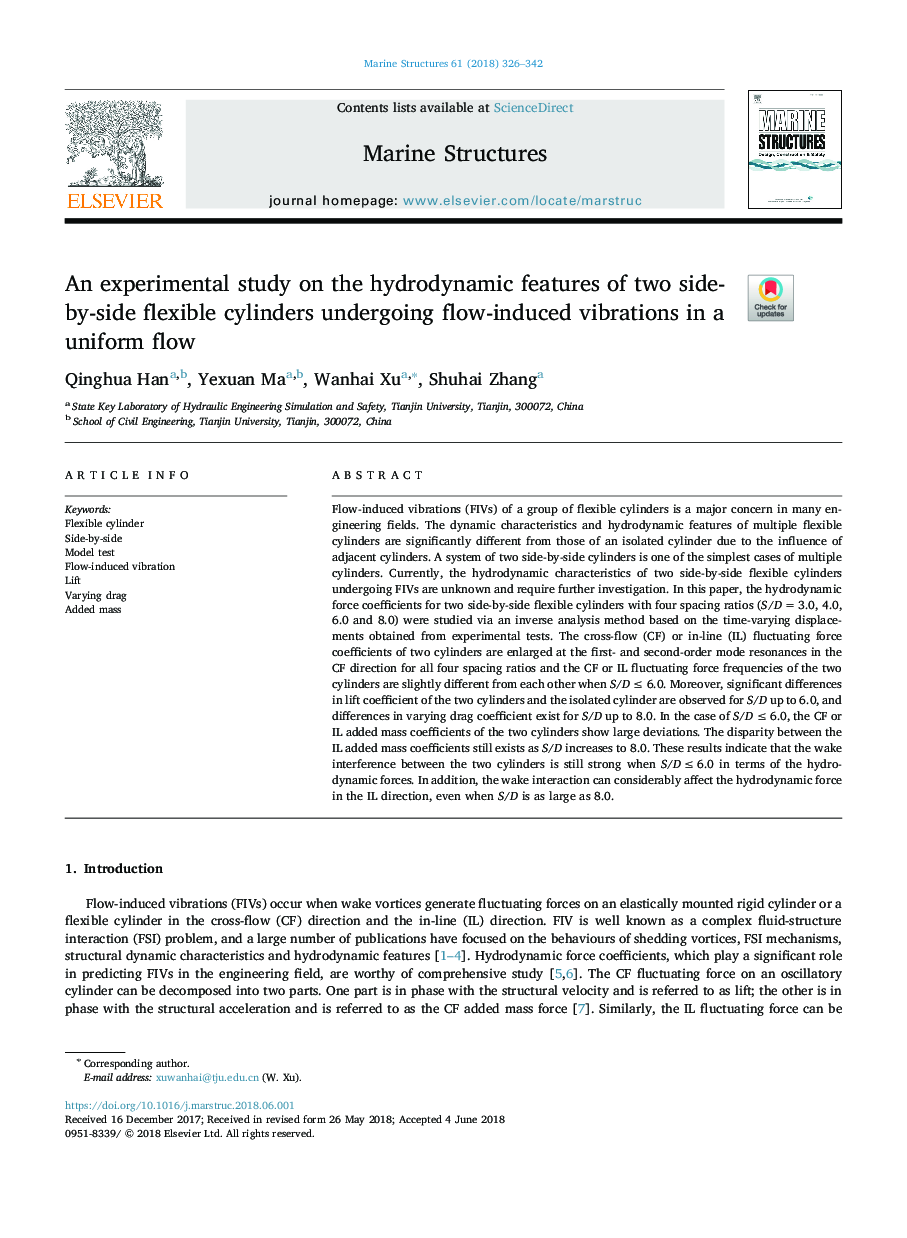| Article ID | Journal | Published Year | Pages | File Type |
|---|---|---|---|---|
| 6757901 | Marine Structures | 2018 | 17 Pages |
Abstract
Flow-induced vibrations (FIVs) of a group of flexible cylinders is a major concern in many engineering fields. The dynamic characteristics and hydrodynamic features of multiple flexible cylinders are significantly different from those of an isolated cylinder due to the influence of adjacent cylinders. A system of two side-by-side cylinders is one of the simplest cases of multiple cylinders. Currently, the hydrodynamic characteristics of two side-by-side flexible cylinders undergoing FIVs are unknown and require further investigation. In this paper, the hydrodynamic force coefficients for two side-by-side flexible cylinders with four spacing ratios (S/Dâ¯=â¯3.0, 4.0, 6.0 and 8.0) were studied via an inverse analysis method based on the time-varying displacements obtained from experimental tests. The cross-flow (CF) or in-line (IL) fluctuating force coefficients of two cylinders are enlarged at the first- and second-order mode resonances in the CF direction for all four spacing ratios and the CF or IL fluctuating force frequencies of the two cylinders are slightly different from each other when S/Dâ¯â¤â¯6.0. Moreover, significant differences in lift coefficient of the two cylinders and the isolated cylinder are observed for S/D up to 6.0, and differences in varying drag coefficient exist for S/D up to 8.0. In the case of S/Dâ¯â¤â¯6.0, the CF or IL added mass coefficients of the two cylinders show large deviations. The disparity between the IL added mass coefficients still exists as S/D increases to 8.0. These results indicate that the wake interference between the two cylinders is still strong when S/Dâ¯â¤â¯6.0 in terms of the hydrodynamic forces. In addition, the wake interaction can considerably affect the hydrodynamic force in the IL direction, even when S/D is as large as 8.0.
Related Topics
Physical Sciences and Engineering
Engineering
Civil and Structural Engineering
Authors
Qinghua Han, Yexuan Ma, Wanhai Xu, Shuhai Zhang,
